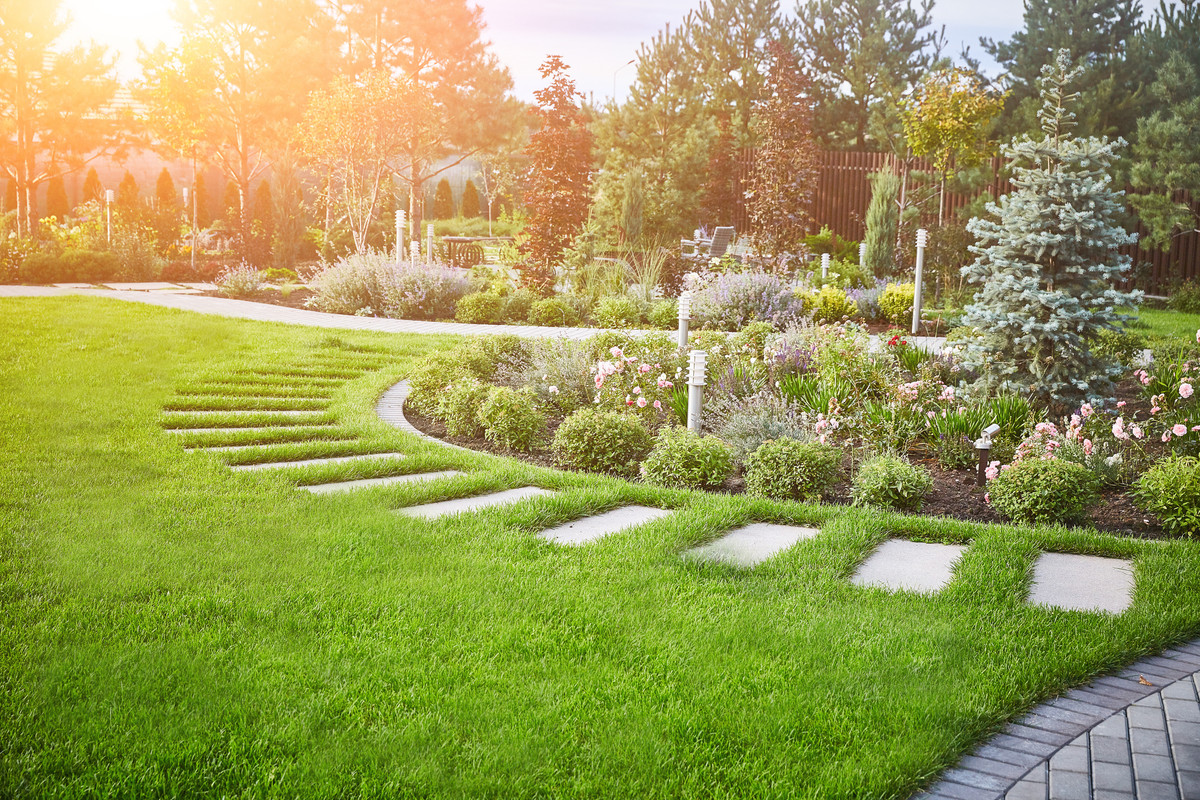Tips For Residential Landscaping
by Admin

When contemplating a residential landscape design, there are several important things to consider. First, remember that large properties tend to have many different areas, each of which serves a distinct function and has different landscape considerations. To start, place tracing paper over a basic plan and sketch out the approximate location of the various major areas. You will need these to guide your design decisions. Next, decide which plants will work best in each area. And last, consider the costs involved in residential landscaping.
Cost Of Residential Landscaping
Before you start a landscape project, consider the cost of each component. While plants and yard decor are important, so is the placement of each component. Consider the following tips for choosing the right materials for the job. A good landscape should be easy to maintain and allow for seamless transitions from inside to outside. Whether you are hiring a professional or working on your own, there are a number of factors to consider. Listed below are some tips to keep in mind.
A well-designed landscape will increase your home's value and increase your enjoyment of your property. Adding landscape lighting can cost as much as $3,500, and can extend your outdoor entertaining well into the evening. Additionally, it can improve security for visitors after dark. Adding an outdoor kitchen can cost anywhere from $4600 to $22,000, and installing a swimming pool can cost upwards of $50,000.
The cost of residential landscaping can vary depending on the type of project you want. Some companies offer package prices that include both the front and backyard. Those who opt for a single-area landscaping project may find that the cost of the entire project can range from $2700 to $30,000.
If you'd like to add a flower bed or restore patches of grass, the cost will depend on the materials you choose. Some materials are cheaper than others, including concrete, brick curbing, and sod. Brick curbing is typically more expensive than preformed concrete blocks, but the overall cost of a landscape project can vary significantly depending on its size and style. There are many different ways to create a landscape, but one of the best ways to find an affordable price for your project is to find a contractor who specializes in this kind of work.
Basic landscaping projects, such as aerating lawns, can cost between $4 and $10 per square foot. Other, more complex projects, such as creating raised beds, may cost upwards of $20 per square foot. In addition to a landscaping contractor's fees, you may need to hire a landscape architect to design the garden. A landscape architect can help you plan the design of your garden, solve drainage problems, and even solve problems that may arise.
Designing A Landscape Plan
First, determine what you want to achieve with your landscaping. You should consider existing features and any changes you want to make. Make sure to include the proper symbols, colors, and patterns for your landscape plan. Also, you need to consider shadows and North. Finally, you need to choose appropriate ground cover and textures. After you have determined these things, you can then make the plan and get it built. Follow the six-step process to create a beautiful landscape plan that meets your needs.
Once you have chosen the plants and the overall design, you need to make sure they will grow well in the area you have selected. You should take into account any existing trees or other plants. Remember that you want them to complement the existing landscaping or complement it. You should also take into consideration the site's climate, sunlight, and wind exposures. Make sure that you have sufficient space for wind to blow around the landscape and dry it periodically. Overshading your home can increase energy costs. The right landscaping placement can save as much as 25% of a typical household's energy usage. By ensuring that all of your outdoor areas are properly insulated, you can substantially reduce energy costs.
Remember that no one approach works for all residential landscape plans. To get the most out of your landscaping design, you must know how to scale the elements of the landscape. Use a hierarchy of uses. If you want a walkway for two people, design a level one path. Level two paths should connect to the main entrance path. A level three path should be for individual experiences. When planning a landscape design for a home, consider the space needs of various users.
First, determine what you want your landscape to be like. It will define the plants, trees, and shrubs that will make up your landscape. You can include lighting, irrigation, and other features that will be part of your plan. You should also think about what will go best with the overall design of your property. A good design should make the landscape appear to be as perfect as you want it to be. After all, you'll spend time putting the elements into action.
Plant Selection
The process of plant selection for a residential landscape is a multi-stage process that incorporates aesthetic preferences, function, and adaptability of species to the site. Depending on your tastes and your design intent, some criteria will be more important than others. Whatever the process, you should consider carefully the criteria and reward yourself with a beautiful landscape composition. For guidance, consider the following checklist. Listed below are some tips for choosing plants for a residential landscape.
Consider the climate, soil, and sunlight. Many plants have a preference for one type of light or another. Also, take into account wind exposure and water availability. When choosing plants, consider the strength of their roots. Ensure that they can withstand the elements by choosing those with large roots. If possible, avoid plants with brown leaves or asymmetrical forms. Consider other factors, such as the aesthetics of the plants, to avoid making the decision based on price alone.
A mature plant's height and width are important factors to consider when choosing plants for a residential landscape. Make sure they will not crowd the space around your house. This can lead to maintenance issues. If your space is limited, make sure there is plenty of room around the sides of your house. Moreover, it is important to leave enough space between trees and shrubs to facilitate air circulation and maintenance. Once you've chosen the right plants, you can start implementing your plan.
Consider the overall look of your landscape. Typically, plants dominate the landscape. These types contribute most to a home's microclimate, spatial organization, and security concerns. A landscape design with these three components should complement one another. To reduce maintenance, choose seasonal flowering plants. These will reduce the overall maintenance impact. A well-designed landscape will reflect your personality. If you'd like to create a unique landscape, consider a working kitchen garden.
Aspects that influence plant selection for residential landscaping include light exposure and soil quality. Soil conditions can be shallow, compact, or subject to drought. If the soil is disturbed, most plants will suffer. Similarly, soil quality can be low or high and require a pH test. You should know the conditions before selecting plants, so you can make the right decision. Whether your property is in a new subdivision, or an old one, a soil test will tell you which plants are best suited for the area.
Maintenance
Home landscaping maintenance is just as important as commercial landscape maintenance. The reasons are slightly different, however. One of the most obvious benefits of residential landscape maintenance is the visual appeal. Whether you're a first-time homeowner or have lived on a property for years, your landscaping will often be the first thing people see when they drive by. Therefore, proper landscape maintenance is an essential part of improving the curb appeal of your home. However, it's not enough to just mow your lawn every day. You need to have a sound landscape maintenance plan that you can implement.
CATEGORY: Landscaping
TAGS: landscaping services, landscaping guide, landscape designs, landscaping approaches, landscaping techniques
When contemplating a residential landscape design, there are several important things to consider. First, remember that large properties tend to have many different areas, each of which serves a distinct function and has different landscape considerations. To start, place tracing paper over a basic plan and sketch out the approximate location of the various major…
Recent Posts
- Comparing Invisalign and Traditional Braces for Teeth Straightening
- Exploring the Key Advantages of Choosing Invisalign Over Traditional Braces
- Clutch ‘N Tote Launches New Sustainable Fashion Brand This August 2024
- Tindale Pest Control Is Your Trusted Partner in Pest Control in Ocala, FL
- EZ Roofing of Flagler County: The Premier Choice for Palm Coast Roofing Services
